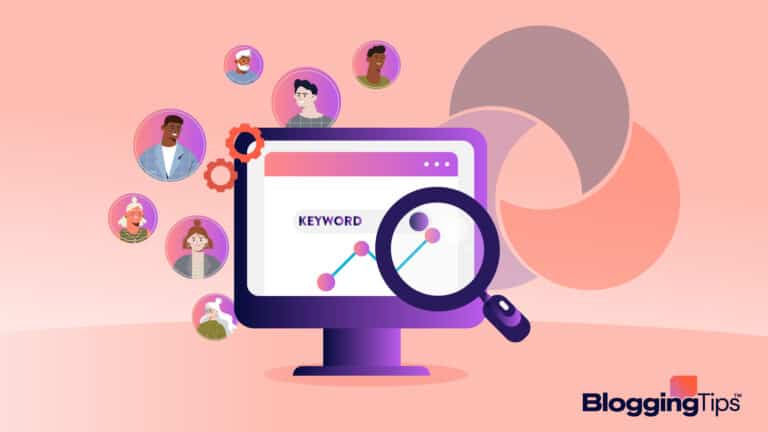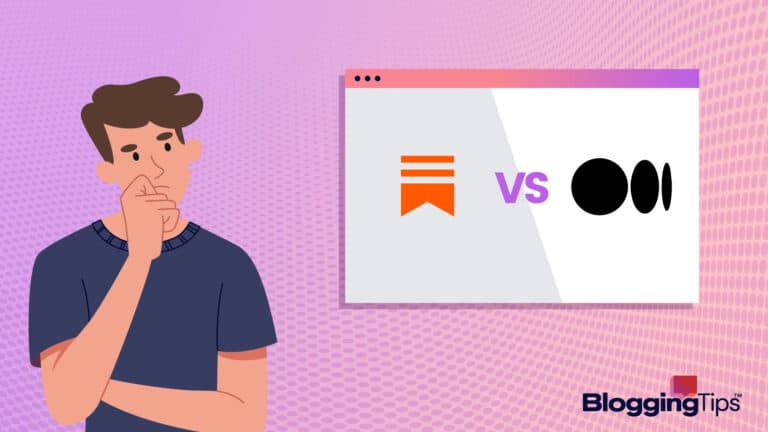Imagine that your new luxury goods company’s product is a leather tote bag that costs thousands of dollars apiece.
You then decided to launch a social media campaign via TikTok ads targeting anyone interested in women’s bags.
A couple of months later, you start to wonder why sales are not moving, and your TikTok ad campaign isn’t attracting many new customers.
The problem is your catch-all marketing approach.
The problem with targeting everyone is that you won’t be able to stand out in a crowded marketplace. Customers already know established brands in the same industry that are meeting their needs, so why will they want to buy from a new brand that’s not offering anything different?
The secret to marketing success is to identify that specific group of people that will be drawn to the unique features that set your brand apart.
In this article, I will explain the importance of niche audiences, how you can identify yours, and how you can reach out to them.
What Is A Niche Audience?
A niche audience is a subgroup of your target market with specific needs and interests that align with the unique value proposition of your product or service.
I should clarify that a niche audience doesn’t mean a small audience. It is the specific audience that will be attracted to your brand messaging and willing to pay for your product or service.
This is different from what applies in a mass marketing strategy that focuses on everyone within the target market. A niche marketing strategy focuses on a specific demographic of customers who will benefit the most from the product or service on offer.
I must also point out that not all businesses have a niche audience. For example, if you sell a generic product like bottled water, the target audience for your marketing is everyone.
How To Find Your Niche Audience
Follow the process below to identify the audience that will be most interested in your product.
Step 1: Analyse The Product Or Service You’re Selling
It all starts with your company. The unique value proposition of your product or service will ultimately determine the kind of people that will respond to your brand messaging.
Ask yourself; who is my product for? Why will they be interested in paying their hard-earned dollars for my offering? What sets my solution apart from other alternatives in the market?
The answers to those questions should help you narrow down your niche market.
For example, let’s say you are planning to start a charter limo service. You will have to decide whether you want to focus on business clients that you will be ferrying from the airport to meetings, or focus on clients in the event circuit that includes parties, birthdays, and weddings.
If your fleet is made up of luxurious, quiet limousines, then it may be ideal for you to focus on corporate transportation. On the other hand, a fleet of stretch limousines and party busses, as well as drivers that know all the fun locations in town, will be perfect for the event circuit.
Generally, a business can set itself apart via the following factors:
- The production quality of its offering,
- The price point of its product,
- And the values that govern its brand principles.
Step 2: See Who Your Competitors Are Targeting
Your established competitors have a foothold in the market because they are meeting the needs of customers.
I am not saying you should copy them and imitate all their strategies. Rather, the goal of your competitor analysis is to identify strengths and weaknesses so that you can do better.
You will be able to use the knowledge gleaned from your research to focus your brand positioning on issues that they are not currently addressing.
Step 3: Use Tools
There are several market research tools out there that can help you gain even greater insights into your niche market.
They include:
- Google Analytics: when connected to your website, this tool will help discover the demographics of your site’s visitors, the pages they visit often, and even their favorite social media platforms.
- Google Trends: another analytics tool offered by Google, it helps you monitor the latest trends in your industry. You will be able to look up trending keywords in your industry that you can use in your content strategy and brand messaging.
- SEO Tools: market analytics tools like Semrush will help you analyze your competitors to determine the keywords they are ranking for, their most popular web pages, and the audience segment that is visiting their websites.
- Social Listening Tools: they help you track mentions of brands, products, and key terms in your industry. This information will help you identify the prevailing sentiments in your target market, the motivation behind those sentiments, and the segment of the market that is expressing such opinions.
Step 4: Build A Profile Of Your Ideal Customer
Everything you have done in steps one to three should have helped you narrow down your target audience.
Now, you must build a complete profile (buyer persona) of your ideal customer so you can understand them more intimately. A deep understanding of your target customers will show you the right way to position your brand on the market.
A complete customer profile should include the following information:
- Profession
- Age
- Gender
- Income
- Education level
- Relationship status
- Geographical location
- Goals
- Challenges
- Hobbies
How Do You Target Your Niche Audience?
You have identified your target audience, and you know why they would want to buy from you, so how can you make them discover your brand?
1. Figure Out Which Social Platforms They Are Using
If you are going to promote a product to a niche audience, then you must meet with them in places where they tend to congregate.
Thankfully, your market research should provide all the information you need. For example, if your customer profile shows that your most likely customers are baby boomers that are more comfortable with Facebook, then the right approach will be to advertise your business using Facebook ads.
If they are mostly members of the Gen Z generation that spend the bulk of their screen time on platforms like TikTok and Instagram, your content marketing efforts must be focused on those platforms.
Once you know where to find your ideal customers online, you will be able to craft promotional content that is designed specifically for those platforms.
2. Produce Content They Are Looking For
This builds on the preceding what I covered in the preceding section. While knowing where to target your audience is important, you must also communicate with them using language that will resonate with that demographic of customers.
The easiest way to identify the type of content that will pique their interest is to study your competitors. Use market analytics tools to identify the following:
- The type of content they produce that gets the most engagement,
- The social media posts and videos that get the most likes and shares.
- And their social media posting schedule.
All that information should show you what engages your target audience and the right format to present your content.
I highly recommend using hashtags when sharing content on social media to reach as many people as possible.
3. Engage With Your Target Audience
If the content you are sharing resonates with customers, they will engage with it by posting comments and sharing the posts with their friends.
You must capitalize on that engagement and build a relationship with your followers. Respond to their comments and try to organize events like Q&A sessions that foster interactions between them and your brand.
The idea is to do everything possible to keep the conversation going between you and your audience. The more they come to associate with your brand, the more loyal they will become.
4. Reach Out To Niche Influencers
Another way you can connect with your niche audience is to work with influencers in your industry.
These are individuals that have established themselves as authorities in your industry and have built a dedicated audience of followers that listen to everything they say.
Of course, their audience must be made up of people that will be interested in what you are selling. There is no point in working with a fitness influencer when your product is cookware.
Niche Audience Examples
A brand can opt to pay more attention to any customer segment than others if it feels that’s the best approach for success. Several companies have found success with this approach, and below is a list of some of them:
- Eco-conscious customers: Noissue, the packaging company that only sells recyclable packaging materials manufactured using sustainable materials, is a good example of a company that has found success as an eco-friendly brand.
- Pet owners: Castor & Pollux Natural Petworks has found success by positioning itself as a company that only sells organic dog and cat food.
- The LGBTQ+ Community: TomboyX, a small business with less than 21 employees, makes over $10 million in annual revenues from selling clothing that is designed for anybody, irrespective of gender identity.
- Local Shoppers: Made With Local started as a small food company in Nova Scotia, Canada, that sourced all its ingredients from local customers to appeal to the local community. Today, the company has multiple shop locations in the US and Canada, but it still sources all its raw materials from local Canadian suppliers.
- Remote Workers: Nomatic has found success by focusing on digital nomads. The company sells bags, cameras, backpacks, and other accessories that will be required by someone that is constantly on the move.
Frequently Asked Questions
What Is The Difference Between Niche And Mass Audience?
A niche audience is a narrow segment of your target market with specific needs and preferences that can only be met adequately by a purpose-built product or service. On the flip side, a mass audience is the entire target market for your industry.
What Is The Most Popular Niche?
Every industry has sub-industries that opportunistic entrepreneurs have successfully tapped. Popular niches with lots of success stories include health & wellness, pets, financial management & wealth building, and beauty & fashion.
Wrapping Up
One of the most wonderful things about niche marketing is that if you are able to build a bond with your target audience is that they tend to be loyal customers for a very long time.
Luckily, this article has shown you all you need to know about finding and targeting your niche audience.
Now it’s up to you to start applying the principles and steps outlined in this article. As you start the process, please share every success and misstep you may face along the way in the comments section.







